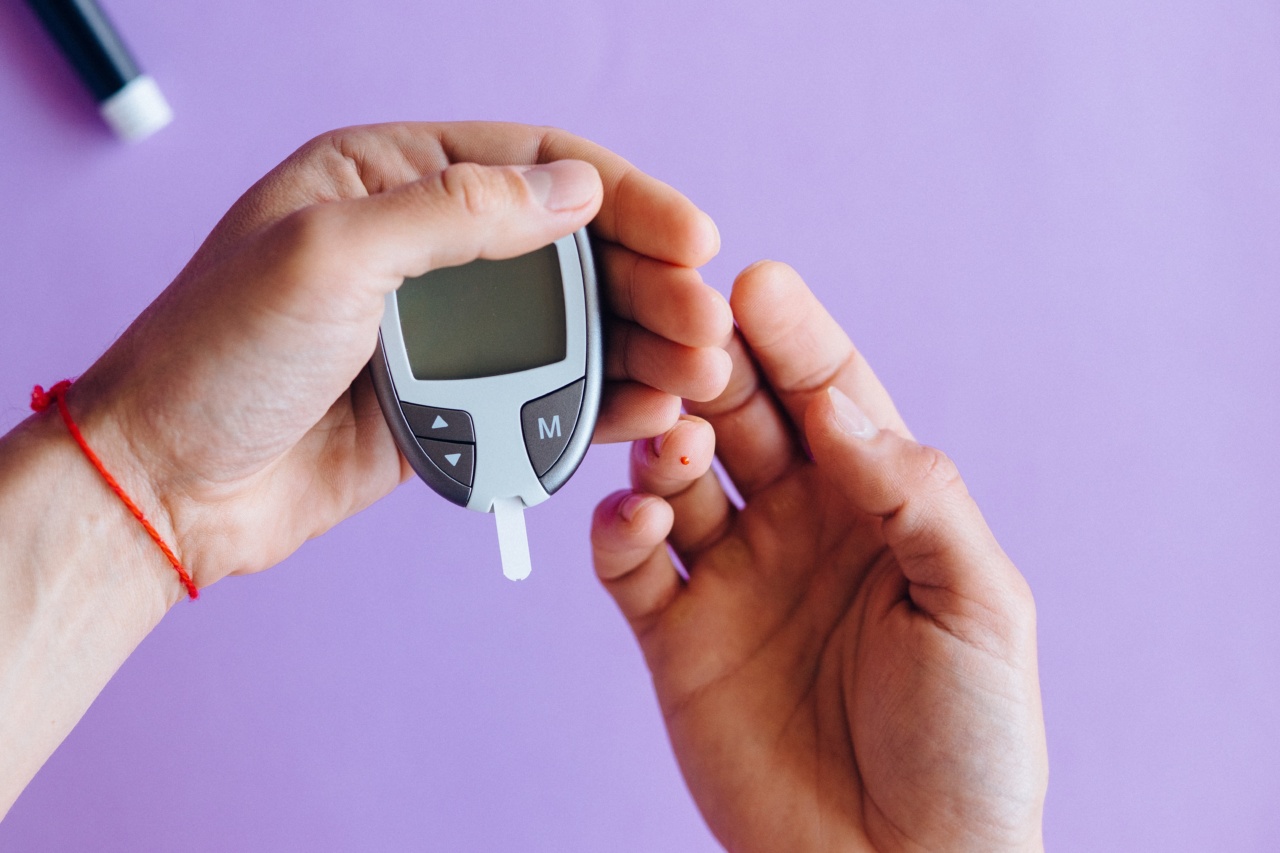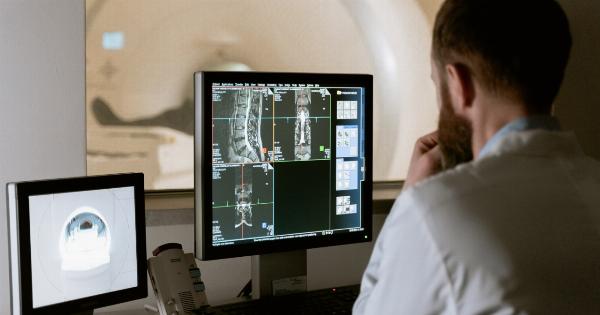In the medical field, early and accurate diagnosis is crucial for effective treatment and management of various health conditions. This holds true for stroke, anemia, and diabetes – three common yet potentially serious health conditions.
Fortunately, advancements in medical technology have led to the development of several speedy diagnostic tools and tests for these conditions. These diagnostics enable healthcare professionals to quickly identify these conditions, allowing for prompt intervention and improved patient outcomes.
In this article, we will explore three of these speedy diagnostic methods for stroke, anemia, and diabetes.
Diagnostics for Stroke
Stroke is a medical emergency that occurs when blood flow to the brain is disrupted, leading to permanent brain damage or even death if not promptly treated.
Recognizing the signs of a stroke and diagnosing it quickly is essential for providing appropriate medical intervention. Here are three speedy diagnostics for stroke:.
1. Computed Tomography (CT)
A CT scan is a commonly used diagnostic tool in stroke assessment. It uses a combination of X-rays and computer technology to create detailed images of the brain.
CT scans can quickly identify whether a stroke is caused by a blood clot (ischemic stroke) or a ruptured blood vessel (hemorrhagic stroke). This information is crucial as treatment strategies vary for these two types of strokes. CT scans also help rule out other conditions with similar symptoms, such as brain tumor or infection, providing greater diagnostic accuracy.
2. Magnetic Resonance Imaging (MRI)
MRI is another valuable diagnostic tool for identifying strokes.
It utilizes powerful magnets and radio waves to create detailed images of the brain, allowing healthcare professionals to visualize any abnormal areas, such as damaged brain tissue caused by a stroke. MRI scans provide a higher level of detail compared to CT scans, making them particularly useful for detecting small or subtle strokes, as well as assessing the extent of brain damage.
Additionally, MRI can help identify the underlying cause of a stroke, such as a blood vessel abnormality or a tumor pressing on a blood vessel.
3. Transcranial Doppler (TCD)
TCD is a non-invasive diagnostic technique that evaluates blood flow in the major blood vessels of the brain. It uses sound waves to measure the speed and direction of blood flow.
In stroke assessment, TCD can identify abnormalities in blood flow caused by narrowed or blocked blood vessels, which may indicate the presence of a stroke. TCD is particularly useful in the early detection of strokes, allowing for prompt intervention and improved outcomes. It is also a valuable tool for monitoring blood flow in patients who have undergone stroke treatment or surgery.
Diagnostics for Anemia
Anemia is a condition characterized by a deficiency of red blood cells or hemoglobin in the blood, leading to a reduced capacity of the blood to carry oxygen to the body’s tissues.
Early diagnosis of anemia is essential for identifying and addressing the underlying cause and preventing complications. Here are three speedy diagnostics for anemia:.
1. Complete Blood Count (CBC)
A complete blood count (CBC) is a routine blood test that provides valuable information about the types and numbers of cells in the blood, including red blood cells.
For anemia diagnosis, the CBC measures the levels of hemoglobin, hematocrit, and red blood cells. Abnormally low values in these measurements may indicate the presence of anemia. The CBC can also help determine the type of anemia (e.g., iron-deficiency anemia, vitamin deficiency anemia) based on the size and shape of the red blood cells.
2. Iron Studies
Iron studies are specific blood tests that assess the levels of iron in the blood and the body’s ability to store and use iron effectively. These tests include serum iron, ferritin, transferrin, and total iron-binding capacity (TIBC).
Iron studies are particularly helpful in diagnosing iron-deficiency anemia, the most common type of anemia. Low levels of serum iron and ferritin, along with high levels of transferrin and TIBC, point towards iron deficiency as the cause of anemia. Iron studies are crucial in guiding appropriate treatment, such as iron supplements or dietary changes.
3. Bone Marrow Examination
In some cases, when the cause of anemia remains unclear or when specific types of anemia are suspected, a bone marrow examination may be indicated.
This procedure involves extracting a small sample of bone marrow from the hipbone or breastbone and examining it under a microscope. The examination provides valuable information about the production and maturation of blood cells, identifying any abnormalities or deficiencies that may contribute to anemia.
A bone marrow examination is a more invasive diagnostic procedure, but it can offer critical insights for accurate diagnosis and appropriate treatment.
Diagnostics for Diabetes
Diabetes is a chronic metabolic disorder characterized by high blood sugar levels. Early diagnosis and management of diabetes are essential for preventing complications and maintaining overall health. Here are three speedy diagnostics for diabetes:.
1. Fasting Plasma Glucose (FPG) Test
The Fasting Plasma Glucose (FPG) test measures blood sugar levels after an overnight fast. It is one of the primary diagnostic tests for diabetes.
A blood glucose level of 126 milligrams per deciliter (mg/dL) or higher on two separate occasions indicates diabetes. The FPG test is simple, widely available, and relatively inexpensive, making it an effective and efficient tool for diagnosing diabetes.
2. Oral Glucose Tolerance Test (OGTT)
The Oral Glucose Tolerance Test (OGTT) is another diagnostic test used for identifying diabetes. It involves fasting overnight and then drinking a sugary solution.
Blood glucose levels are then measured at specific intervals to assess the body’s ability to process sugar effectively. A blood glucose level of 200 mg/dL or higher two hours after consuming the solution indicates diabetes.
The OGTT is particularly helpful in diagnosing gestational diabetes and prediabetes, conditions where blood sugar levels are elevated but not yet at the threshold for diabetes.
3. Glycated Hemoglobin (HbA1c) Test
The Glycated Hemoglobin (HbA1c) test provides a measure of average blood sugar levels over the past two to three months. It reflects the percentage of hemoglobin that is glycated (bound to glucose).
Elevated HbA1c levels indicate poor blood sugar control and may suggest the presence of diabetes. A reading of 6.5% or higher on two separate tests confirms the diagnosis of diabetes. The HbA1c test is convenient as it does not require fasting, and its results are not affected by day-to-day fluctuations in blood sugar levels.
Conclusion
Early and accurate diagnosis is crucial for effective treatment and management of stroke, anemia, and diabetes.
The speedy diagnostic methods discussed above – including CT scans, MRIs, TCD, CBC, iron studies, bone marrow examination, FPG tests, OGTTs, and HbA1c tests – enable healthcare professionals to quickly identify these conditions, allowing for prompt intervention and improved patient outcomes. By leveraging these advancements in medical technology, healthcare providers can ensure timely and appropriate care for individuals affected by stroke, anemia, or diabetes.





























